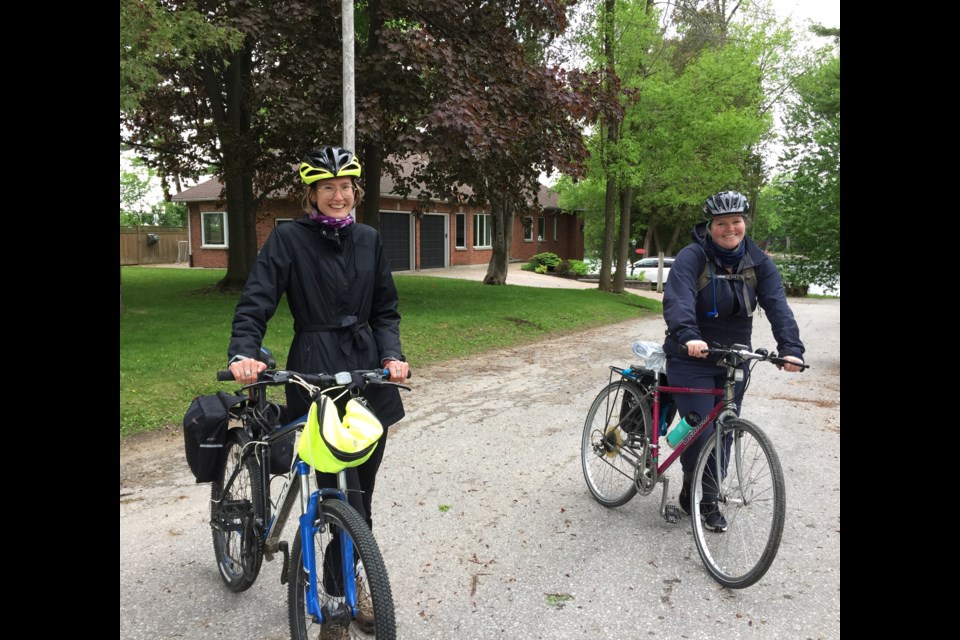When Prime Minister Trudeau paused for 21 seconds during one of his recent updates on national television, were you able to identify the Great Crested Flycatcher singing in the background?
I certainly wasn’t, but was surprised to learn this from someone you would not consider to be a typical “birder.”
The discerning observer was a member of one of the teams competing in the recent Carden Challenge: 35-year-old Tanya Clark, who – along with her teammates (all in their 20s and 30s) – placed third out of 15 teams in the recreation category during the annual event.
Presented by The Couchiching Conservancy, the goal of the Challenge is to raise funds to support the stewardship of the protected Carden Alar by counting as many species as possible during a 24-hour period.
The event typically takes place on location at Carden, located just east of Orillia, but this year, because of the COVID-19 pandemic, the Conservancy organized the At Home Edition. All participants were required to compete within an eight-kilometre radius of their homes.
Clark and teammate Joelle Burnie decided to tackle the challenge together (using physical distancing guidelines), as their homes are located within the same eight-kilometre radius.
As well as living in the same area, they are also both staff members with The Couchiching Conservancy. Clark is Development Coordinator, while Burnie is Engagement Organizer. Three other team members, Philip Careless, Meagan Coughlin and David Giannunzio, rounded out the “Pink Flamingo” team and competed from their home locations.
Even though they were not at the Carden Alvar, with its wide and diverse array of birds and other species, the pair were able to identify 72 different bird species (of the team’s 105 total) quite literally in their own backyards. During the 24-hour challenge, the pair completed 44 kilometres of cycling and seven kilometres of walking.
“I was so surprised by the species I found so close to home,” said Burnie. “I grew up in Orillia and the neighbourhood I thought I knew so well has been completely transformed.
"The nearby wetlands, lake, trails and ditches are so full of life," said Burnie. "Before I started preparing for the Carden Challenge, it would take me about an hour to walk around my neighbourhood; now it takes me about three hours because I realize how much there is to see, listen to and take pictures of.”
This year’s event also offered some new challenges.
“The biggest challenge for us was contending with urban noise," explained Clark. In addition to the usual city sounds, generators started coming on at one point because the power went out.
The cold, rainy weather also meant the birds weren’t singing as much. This is important, because it is how many of the birds on the team’s list were identified.
Although the use of “binos” (as birders refer to binoculars) is essential when trying to spot and identify birds, listening seems to be the real key.
“The way I like to learn (to identify birds) is by the mnemonics and mimicking that I have heard from more experienced birders,” said Burnie. Mnemonics are “devices intended to assist the memory, as a verse or formula” and are often used to distinguish bird calls. “If I hear ‘drink your teeaa,’ I know I am listening to an Eastern Towhee.”
“Mimicking is simply repeating what you hear the bird singing, like the ‘witchey-witchey-witchey” of a Common Yellowthroat," added Clark.
“I used to think all birds sounded like tweet, tweet, tweet,” said Burnie, “but once I started learning different calls and sounds, I have been amazed to discover so many different bird species, even in my own backyard."
"Once you start paying attention, you’d be surprised at what’s out there,” agreed Clark.
Some of the more notable finds on their birding marathon were Killdeers, Swans, Chimney Swifts, and a Downy Woodpecker at 5:57 p.m., three minutes before the 24-hour cut-off. No pink flamingos, although another team noted two sightings on front lawns.
Burnie and Clark are certainly enthusiastic about continuing to increase their birding skills. And they are quick to point out that many of the Carden Challenge teams represent all ages.
“There has been a shift,” explains Clark. “At one time, most participants were older people, but not anymore.”
She says that birding has connections to other activities, such as video games, enjoyed by younger people – the challenge of search and discovery and adding up scores.
For those who are interested in learning more about the birds and wildlife nearby, Clark and Burnie suggested a great way to start is in your own backyard or at your bird feeder. And they also recommend taking advantage of the many resources out there, from guidebooks and phone apps to other local birders and experts.
“I was definitely was not a birder before doing the Challenge. I was quite nervous during my first Challenge last year because I didn't really know any birds, but just tagging along with a team is a great way to start," said Burnie.
“And being able to identify a species on your own, even if it's a common one, is the best feeling in the world!” she said. Not to mention the benefit of being able to impress your friends from time to time.
